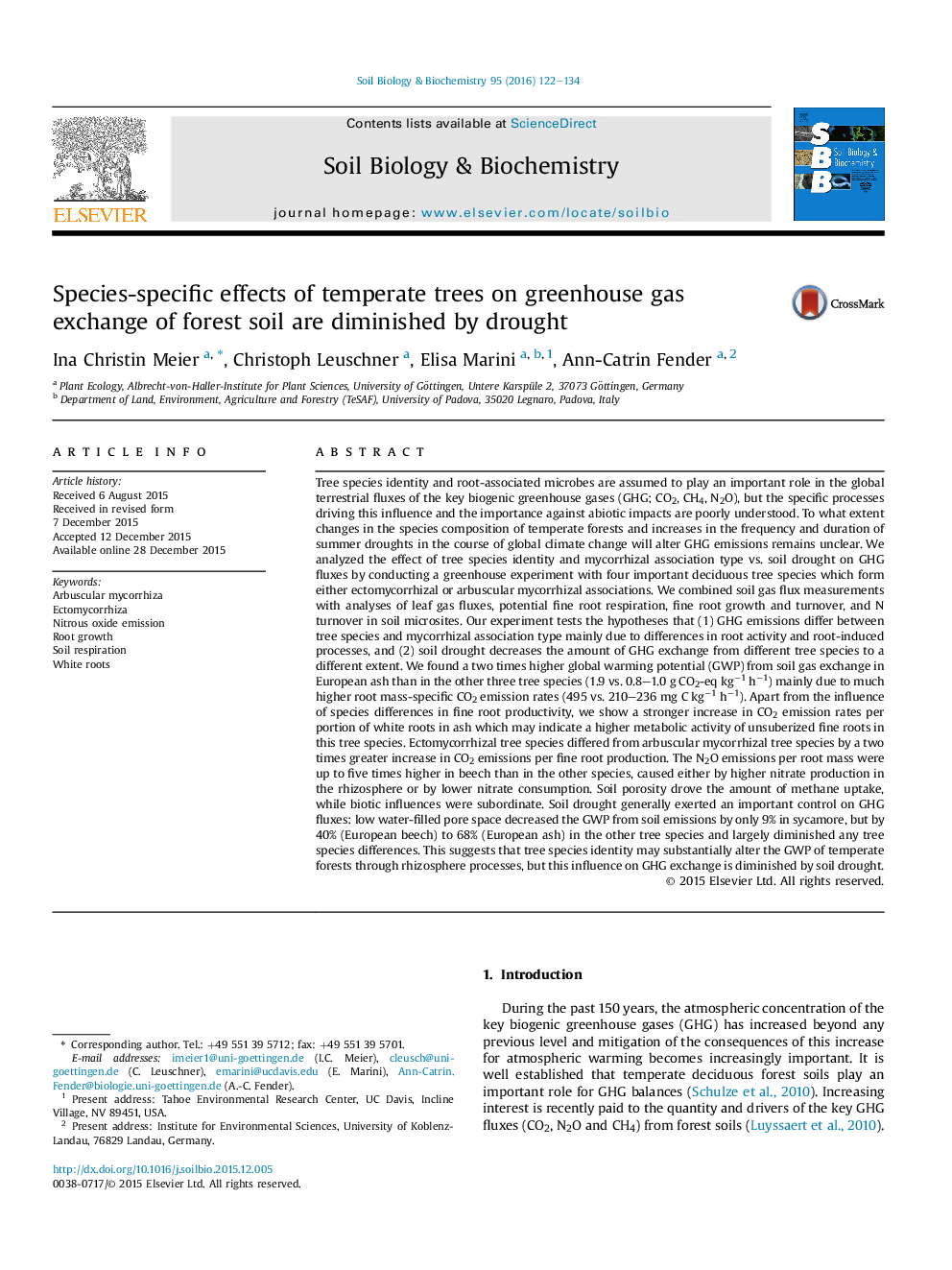| Article ID | Journal | Published Year | Pages | File Type |
|---|---|---|---|---|
| 2024271 | Soil Biology and Biochemistry | 2016 | 13 Pages |
Abstract
Tree species identity and root-associated microbes are assumed to play an important role in the global terrestrial fluxes of the key biogenic greenhouse gases (GHG; CO2, CH4, N2O), but the specific processes driving this influence and the importance against abiotic impacts are poorly understood. To what extent changes in the species composition of temperate forests and increases in the frequency and duration of summer droughts in the course of global climate change will alter GHG emissions remains unclear. We analyzed the effect of tree species identity and mycorrhizal association type vs. soil drought on GHG fluxes by conducting a greenhouse experiment with four important deciduous tree species which form either ectomycorrhizal or arbuscular mycorrhizal associations. We combined soil gas flux measurements with analyses of leaf gas fluxes, potential fine root respiration, fine root growth and turnover, and N turnover in soil microsites. Our experiment tests the hypotheses that (1) GHG emissions differ between tree species and mycorrhizal association type mainly due to differences in root activity and root-induced processes, and (2) soil drought decreases the amount of GHG exchange from different tree species to a different extent. We found a two times higher global warming potential (GWP) from soil gas exchange in European ash than in the other three tree species (1.9 vs. 0.8-1.0 g CO2-eq kgâ1 hâ1) mainly due to much higher root mass-specific CO2 emission rates (495 vs. 210-236 mg C kgâ1 hâ1). Apart from the influence of species differences in fine root productivity, we show a stronger increase in CO2 emission rates per portion of white roots in ash which may indicate a higher metabolic activity of unsuberized fine roots in this tree species. Ectomycorrhizal tree species differed from arbuscular mycorrhizal tree species by a two times greater increase in CO2 emissions per fine root production. The N2O emissions per root mass were up to five times higher in beech than in the other species, caused either by higher nitrate production in the rhizosphere or by lower nitrate consumption. Soil porosity drove the amount of methane uptake, while biotic influences were subordinate. Soil drought generally exerted an important control on GHG fluxes: low water-filled pore space decreased the GWP from soil emissions by only 9% in sycamore, but by 40% (European beech) to 68% (European ash) in the other tree species and largely diminished any tree species differences. This suggests that tree species identity may substantially alter the GWP of temperate forests through rhizosphere processes, but this influence on GHG exchange is diminished by soil drought.
Related Topics
Life Sciences
Agricultural and Biological Sciences
Soil Science
Authors
Ina Christin Meier, Christoph Leuschner, Elisa Marini, Ann-Catrin Fender,
